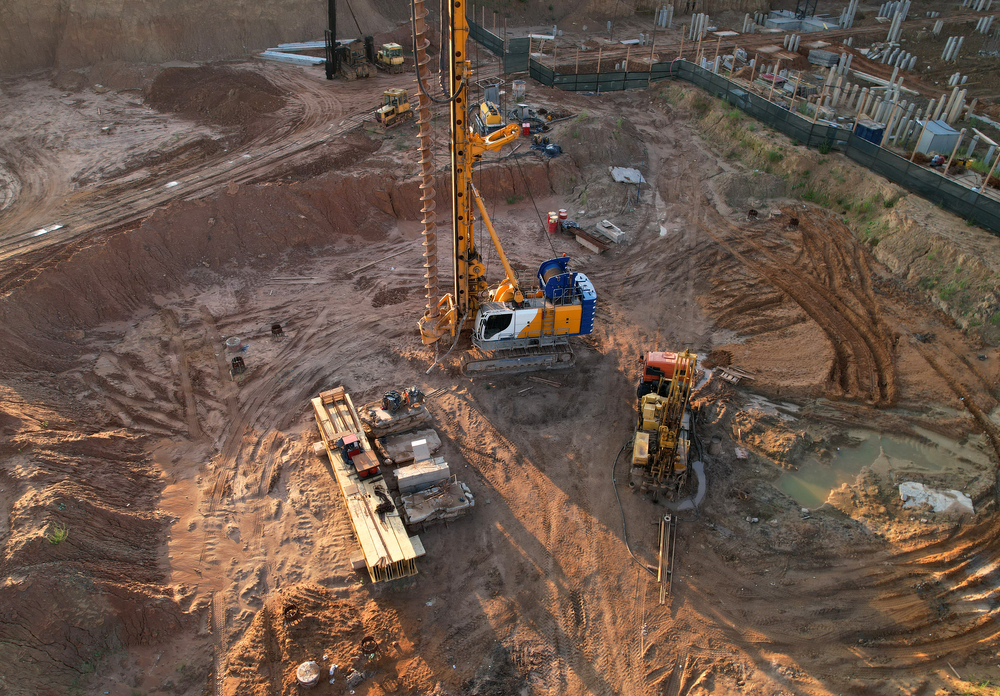Everything about Geotheta
Everything about Geotheta
Blog Article
A Biased View of Geotheta
Table of ContentsGeotheta Things To Know Before You BuyThe 5-Second Trick For GeothetaEverything about GeothetaThe Buzz on GeothetaWhat Does Geotheta Do?

They carry out website investigations, gather examples, do lab examinations, and analyze information to evaluate the suitability of the ground for building jobs - Tailings Engineer. Based on their searchings for, geotechnical designers supply referrals for foundation design, slope security, keeping frameworks, and mitigation of geotechnical hazards. They team up with various other professionals, such as engineers, structural designers, and building groups, to make sure that geotechnical considerations are integrated into the total project layout and execution
By examining the habits and properties of dirt and rock, they can identify possible geotechnical risks such as landslides, dirt negotiation, or slope instability. Their competence helps stop failures or mishaps that can threaten lives and home. Below are some detailed duties and responsibilities of a geotechnical engineer: Website Investigation: Geotechnical designers conduct website examinations to gather data on subsurface problems.
They translate the information to recognize the residential properties and habits of the dirt and rock, including their stamina, leaks in the structure, compaction attributes, and groundwater problems. Geotechnical Evaluation and Design: Geotechnical engineers examine the information gathered throughout website examinations to analyze the stability and suitability of the site for construction tasks. They carry out geotechnical calculations and modeling to review elements such as bearing capacity, negotiation, slope security, side earth stress, and groundwater circulation.
Geotheta - The Facts
Structure Layout: Geotechnical designers play a crucial role in designing structures that can securely sustain the designated structure. They analyze the soil conditions and tons needs to figure out the proper foundation type, such as shallow foundations (e.g., footings), deep foundations (e.g (https://www.storeboard.com/geotheta)., piles), or specialized methods like dirt enhancement. They think about factors such as negotiation restrictions, bearing ability, and soil-structure interaction to establish optimum structure layouts
They assess construction plans, display site tasks, and perform area evaluations to confirm that the layout recommendations are adhered to. If unanticipated geotechnical problems occur, they evaluate the circumstance and supply referrals for removal or changes to the layout. Risk Assessment and Mitigation: Geotechnical designers examine geotechnical hazards and risks connected with the task site, such as landslides, liquefaction, or dirt disintegration.

Partnership and Communication: Geotechnical designers work carefully with various other experts involved in a job, such as designers, architectural designers, and building and construction teams. Efficient communication and cooperation are necessary to incorporate geotechnical factors to consider right into the total project layout and building and construction procedure. Geotechnical designers offer technological expertise, answer inquiries, and ensure that geotechnical needs are met.
Geotheta Things To Know Before You Buy
Below are some sorts of geotechnical engineers: Foundation Designer: Foundation designers focus on making and analyzing structures for frameworks. They analyze the soil problems, lots needs, and site qualities to identify the most suitable foundation type and design, such as superficial foundations, deep foundations, or specialized techniques like pile structures.
They assess the factors influencing incline security, such as dirt properties, groundwater problems, and slope geometry, and create approaches to stop incline failures and mitigate risks. Earthquake Designer: Quake designers focus on assessing and designing structures to hold up against seismic pressures. They analyze the seismic threat of a site, evaluate dirt liquefaction capacity, and establish seismic layout requirements to guarantee the safety and resilience of frameworks during quakes.
They execute area testing, collect samples, and analyze the gathered information to define the dirt properties, geologic formations, and groundwater problems at a website. Geotechnical Instrumentation Designer: Geotechnical instrumentation engineers focus on monitoring and measuring the habits of dirt, rock, and structures. They mount and maintain instrumentation systems that check factors such as dirt settlement, groundwater degrees, incline movements, and architectural displacements to examine efficiency and offer very early cautions of possible issues.
8 Simple Techniques For Geotheta
They perform examinations such as triaxial tests, debt consolidation examinations, direct shear tests, and leaks in the structure tests to gather data for geotechnical evaluation and style. Geosynthetics Designer: click for info Geosynthetics engineers concentrate on the style and application of geosynthetic products, such as geotextiles, geogrids, and geomembranes. They use these products to improve dirt security, strengthen inclines, give drain services, and control erosion.
They tend to be investigatory individuals, which indicates they're intellectual, reflective, and inquisitive. They are interested, methodical, rational, analytical, and logical. Some of them are likewise social, implying they're kind, charitable, participating, client, caring, handy, empathetic, skillful, and pleasant. Does this seem like you? Take our free occupation examination to locate out if geotechnical engineer is among your leading job matches.
In the workplace setting, geotechnical engineers utilize specialized software devices to execute calculations, produce layouts, and evaluate information. They prepare reports, review project specs, communicate with customers and staff member, and coordinate project activities. The workplace setup gives a helpful atmosphere for research, analysis, and partnership with various other specialists associated with the project.
Excitement About Geotheta
They frequently see project websites to carry out site examinations, assess geotechnical conditions, and collect information for analysis. These visits involve traveling to different places, sometimes in remote or challenging terrains. Geotechnical designers might do dirt tasting, conduct tests, and monitor building and construction activities to ensure that the geotechnical elements of the job are being implemented appropriately.
Geotechnical designers likewise function in specialized geotechnical labs. In these facilities, they carry out experiments, execute examinations on dirt and rock examples, and examine the engineering residential properties of the products. Geotechnical laboratory designers work extensively in these settings, managing testing equipment, operating tools, and taping information. They team up with other lab team to make certain precise and trusted testing results.
Report this page